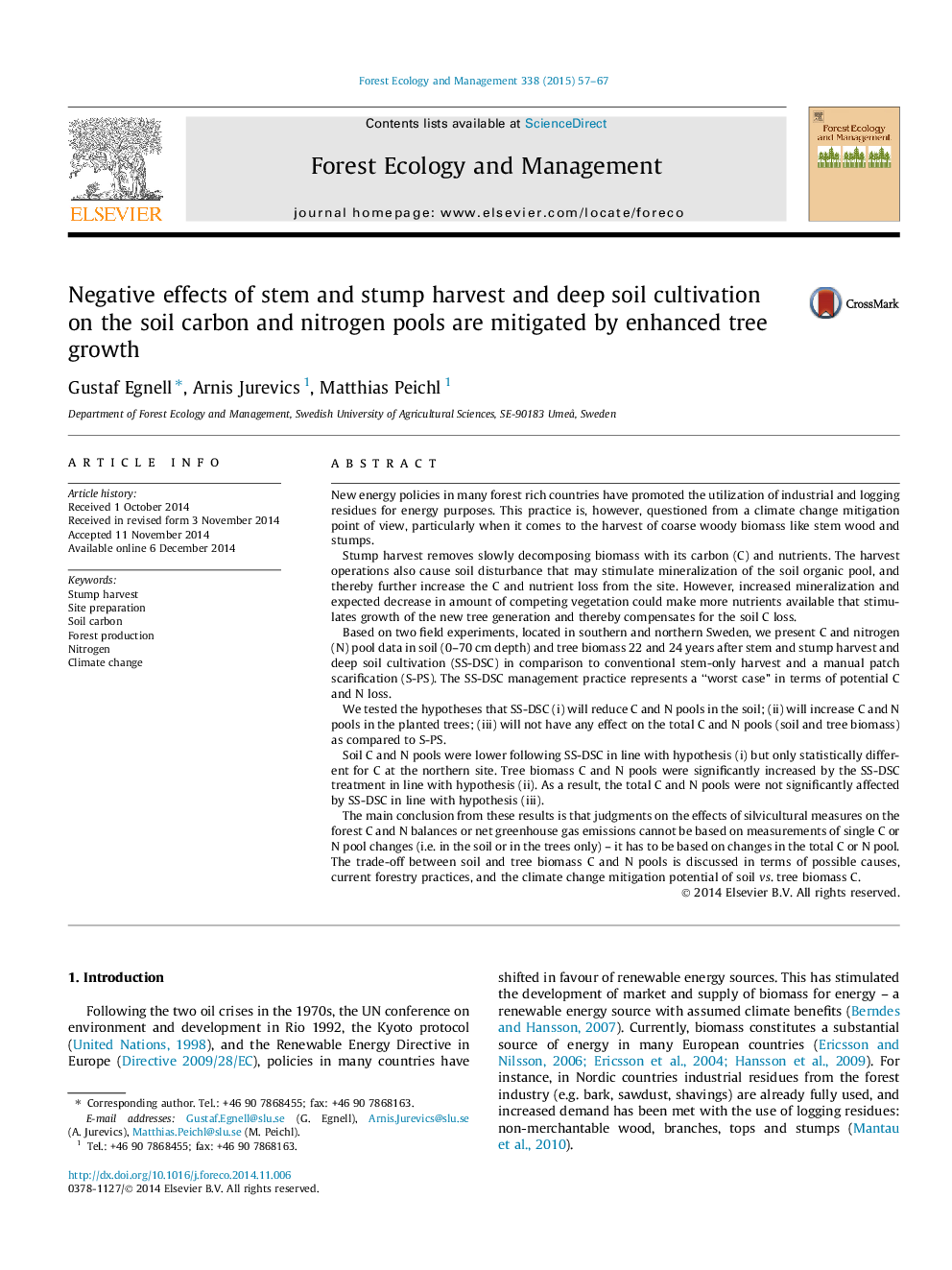| کد مقاله | کد نشریه | سال انتشار | مقاله انگلیسی | نسخه تمام متن |
|---|---|---|---|---|
| 86380 | 159183 | 2015 | 11 صفحه PDF | دانلود رایگان |
• We examined C and N pools two decades after intense harvest and soil cultivation.
• Stem and stump harvest and deep soil cultivation reduced soil C and N pools.
• Stem and stump harvest and deep soil cultivation improved tree growing conditions.
• Due to increased tree growth, total C and N pools (soil + trees) were not affected.
• Estimates of the C and N balance of a managed forest should be based on both pools.
New energy policies in many forest rich countries have promoted the utilization of industrial and logging residues for energy purposes. This practice is, however, questioned from a climate change mitigation point of view, particularly when it comes to the harvest of coarse woody biomass like stem wood and stumps.Stump harvest removes slowly decomposing biomass with its carbon (C) and nutrients. The harvest operations also cause soil disturbance that may stimulate mineralization of the soil organic pool, and thereby further increase the C and nutrient loss from the site. However, increased mineralization and expected decrease in amount of competing vegetation could make more nutrients available that stimulates growth of the new tree generation and thereby compensates for the soil C loss.Based on two field experiments, located in southern and northern Sweden, we present C and nitrogen (N) pool data in soil (0–70 cm depth) and tree biomass 22 and 24 years after stem and stump harvest and deep soil cultivation (SS-DSC) in comparison to conventional stem-only harvest and a manual patch scarification (S-PS). The SS-DSC management practice represents a “worst case” in terms of potential C and N loss.We tested the hypotheses that SS-DSC (i) will reduce C and N pools in the soil; (ii) will increase C and N pools in the planted trees; (iii) will not have any effect on the total C and N pools (soil and tree biomass) as compared to S-PS.Soil C and N pools were lower following SS-DSC in line with hypothesis (i) but only statistically different for C at the northern site. Tree biomass C and N pools were significantly increased by the SS-DSC treatment in line with hypothesis (ii). As a result, the total C and N pools were not significantly affected by SS-DSC in line with hypothesis (iii).The main conclusion from these results is that judgments on the effects of silvicultural measures on the forest C and N balances or net greenhouse gas emissions cannot be based on measurements of single C or N pool changes (i.e. in the soil or in the trees only) – it has to be based on changes in the total C or N pool. The trade-off between soil and tree biomass C and N pools is discussed in terms of possible causes, current forestry practices, and the climate change mitigation potential of soil vs. tree biomass C.
Journal: Forest Ecology and Management - Volume 338, 15 February 2015, Pages 57–67
